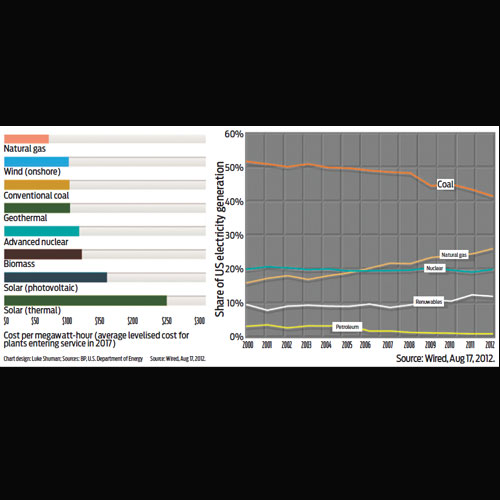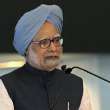
Prime Minister Manmohan Singh is off to Japan this week.
Among other things, he is expected to sign papers relating to a nuclear deal. If true, that would be most unfortunate.
First, general elections are just round the corner. It is not appropriate for any government to sign high-priced deals just before elections are due. Unfortunately, politicians love making big-ticket expenses just before elections.
Past experience has shown that even a small percentage as commissions can be hugely tempting.
Second, all the data currently available indicates that nuclear power is more expensive than coal based power (see charts).
Third, except for France, which depends heavily on nuclear power, almost every country is reducing its dependence on nuclear energy. In fact, as one of the two charts reproduced shows, the US itself has never depended on nuclear energy for more than 20% of its energy mix. Had this source of energy been cheap, it would have enjoyed a bigger share of the US energy basket.
Two clarifications are, however, necessary in respect of the charts reproduced.
Clarification 1: Gas is the cheapest fuel source for energy – but only for the US. When these charts were compiled, gas was available at $2 per million British thermal unit (mmBtu). Today the prices of gas hover around $4. At this price, the US will find coal as competitive as gas, unless two things happen. Either coal prices go up or gas prices come down.
This correspondent believes that the latter will happen because of three reasons: (i) more and more shale gas has been discovered in the US, in Australia and — most importantly — in China, which has bigger reserves than the US and Canada combined; (ii) technology. A year ago, US gas production costs were at least a third higher than they are today.
Currently, they are around $3-4/mmBtu, but could fall rapidly as technological developments and large business in more than a dozen countries drive down such costs; (iii) more gas trading, helped by huge orders for new cryogenic tankers, will allow oil to discover its own price, and not get linked to oil prices.
Clarification 2: Solar energy costs. When these charts were compiled, solar energy costs were $1.5 per installed mw of generation capacity. These costs have dropped to around $1 and continue to fall. Solar power can meet a substantial part of India’s energy requirements by day, and methane from animal dung and human waste could be used to fire up turbines at night. Given huge amounts of sunlight available and the world’s largest population of animals and human beings, India is ideally suited to use these energy forms.










No comments:
Post a Comment